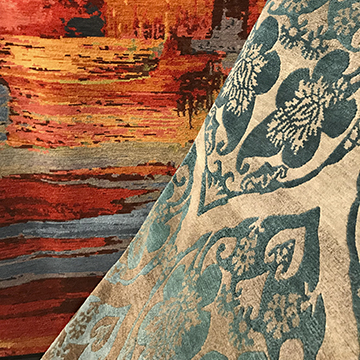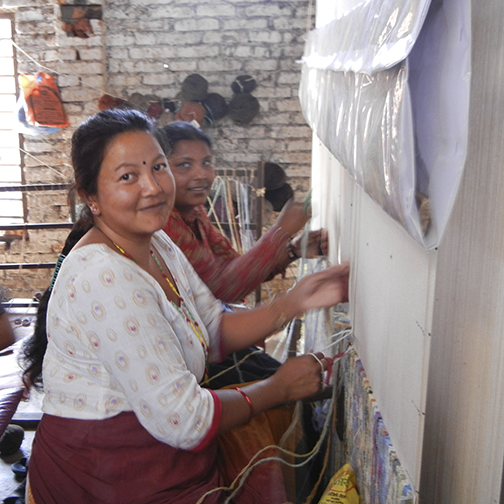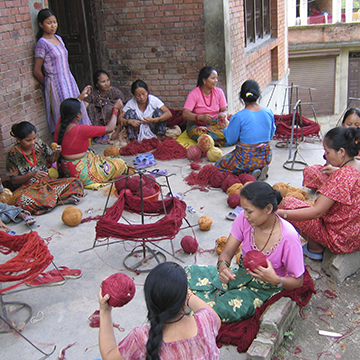Our Process
First, raw wool is brought into Nepal from Tibet. Tibetan sheep live at high altitudes in extreme conditions and are known for producing some of the finest (lanolin-rich, strongly-fibered) wool in the world. In Nepal, the wool is hand-carded, washed and hand spun. Hand-carding and spinning is much more expensive and time consuming than machine processes but achieves two important results: 1) It breaks down less fibers of the wool to create stronger, longer-wearing wool, and 2) Its irregular diameter creates a more desirable, interesting texture in the final carpet.
The wool is pot-dyed in small lots, then hand knotted on looms with a cotton warp. The carpets are next hand clipped and carved. The final step is to wash and block the rugs. This is a lengthy process. To put it in perspective, a 4 x 6 rug requires approximately 250 man-hours to produce! The hand knotting process combined with the superb quality of the wool produces a rug, which under normal circumstances, will last for generations.
Because the rugs are hand knotted, each piece will vary from the next. Sizes will not be exact, circles will not be perfectly round and borders will not be perfectly straight. In this day of "cookie cutter" manufacturing, these imperfections become valuable indications that a product is truly handcrafted. In addition, the hand-knotting process enables us to produce a much denser pile than the finest quality machine made rug. The carpet will have artistic integrity, it will be much more soil and stain resistant and will clean up better than any machine made rug.


